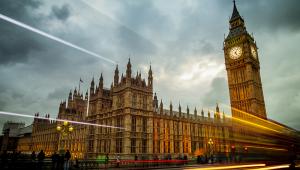The Labour Party has started to shift its position on the future of public expenditure. As recently as June 16, Children’s Secretary Ed Balls told BBC Radio 5 Live: ‘If we can get the economy right… I think we can see spending rising on health and schools in real terms after 2011.’ Yesterday, Chancellor Alistair Darling pushed a rather different line: ‘If consumers, markets and businesses get the message that government wants to carry on spending and isn't serious about dealing with the deficit, they will start to conclude that the UK is no longer a safe place to invest in, spend in or build a business in.’
While Darling and his lieutenants have avoided giving any specific details about where efficiencies or cuts could be made, there can be no doubt the chancellor has forced the Brown-Balls axis to change its tune. Labour’s new line on the future of public spending boils down to a contrast between ‘Well thought-through and socially aware Labour cuts versus random and careless Tory ones’ – definitely a change from ‘Labour investment versus Conservative cuts’.
Tory leader David Cameron also spent Tuesday honing his line on public expenditure, though in reality he was addressing the political crisis caused by the MPs’ expenses scandal. The Conservatives will cut the number of MPs and also remove the subsidy for catering at the House of Commons. Beyond that, the Tories are (unlike Labour) still committed to real-terms NHS spending increases but, overall, seem happy (again, unlike Labour) to envisage cutting back on 2010/11 spending plans. Cameron said ‘public spending will be cut. Not reduced in growth, not frozen – but cut’.
But despite the willingness of Labour, the Conservatives and the Liberal Democrats to indulge in a vaguely articulated auction about who will be most determined when it comes to cutting public expenditure, there is still precious little detail in either Labour or Conservative plans. Neither party seems willing to confront the electorate with the line-by-line impacts of a prolonged programme of spending cuts.
The media have given significant attention to the way that Canada tackled its huge budget deficit in the years after 1995. It is clear that part of the success of the Canadian process involved requiring all parts of government spending to be within the terms of the reduction programme. In addition, politicians explained their actions to the public. While no parallel with another country is ever perfect, Canada is less politically distant from the UK than, say, the US.
British politicians will surely consider radical steps in the months ahead if they are to protect the core purposes of the state. Means testing for benefits, later public sector retirement, outsourcing, co-payment for services and/or new charges for improved provision will all have to be examined. If all such radicalism were rejected, the government might find itself forced into across-the-board cuts.
Intriguingly, applying the ‘salami slicer’ to all programmes might give British politicians less grief than attempts to protect some services while cutting others disproportionately. The development of schools’ funding since 2003 shows clearly that by moving away from funding allocations that discriminated between areas and institutions, the government has subsequently avoided controversy. Similarly, the local government formula grant allocations cause less aggravation if most authorities receive broadly the same average increase. The ever-powerful ‘postcode lottery’ argument can also be seen as implying all areas should be treated in the same way. Is it possible that a government that chose to make a flat-rate spending reduction to all departments and thence to all subsidiary institutions would meet less resistance than if it attempted to protect some of them? What could be fairer than sharing the misery?











